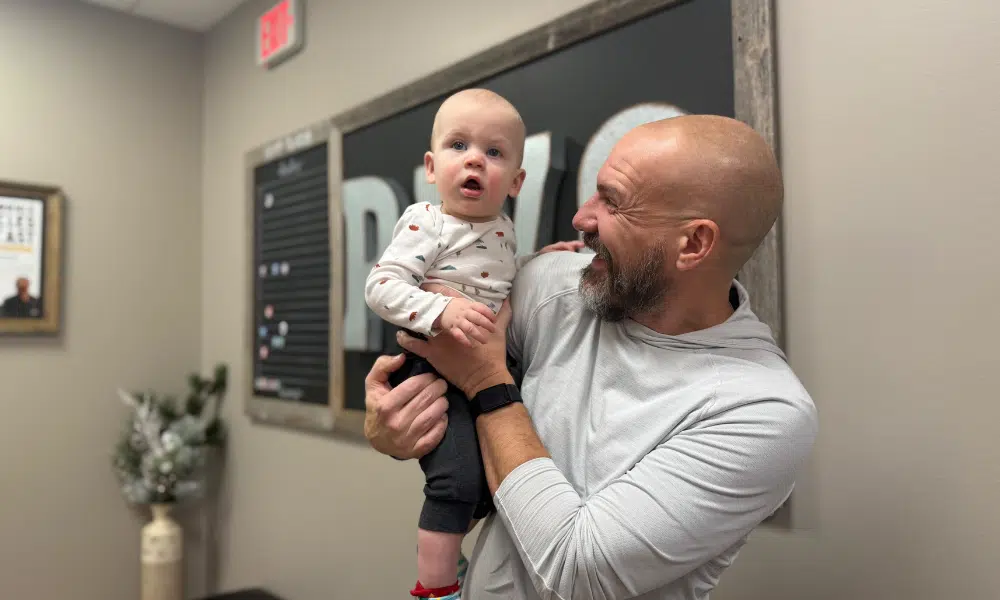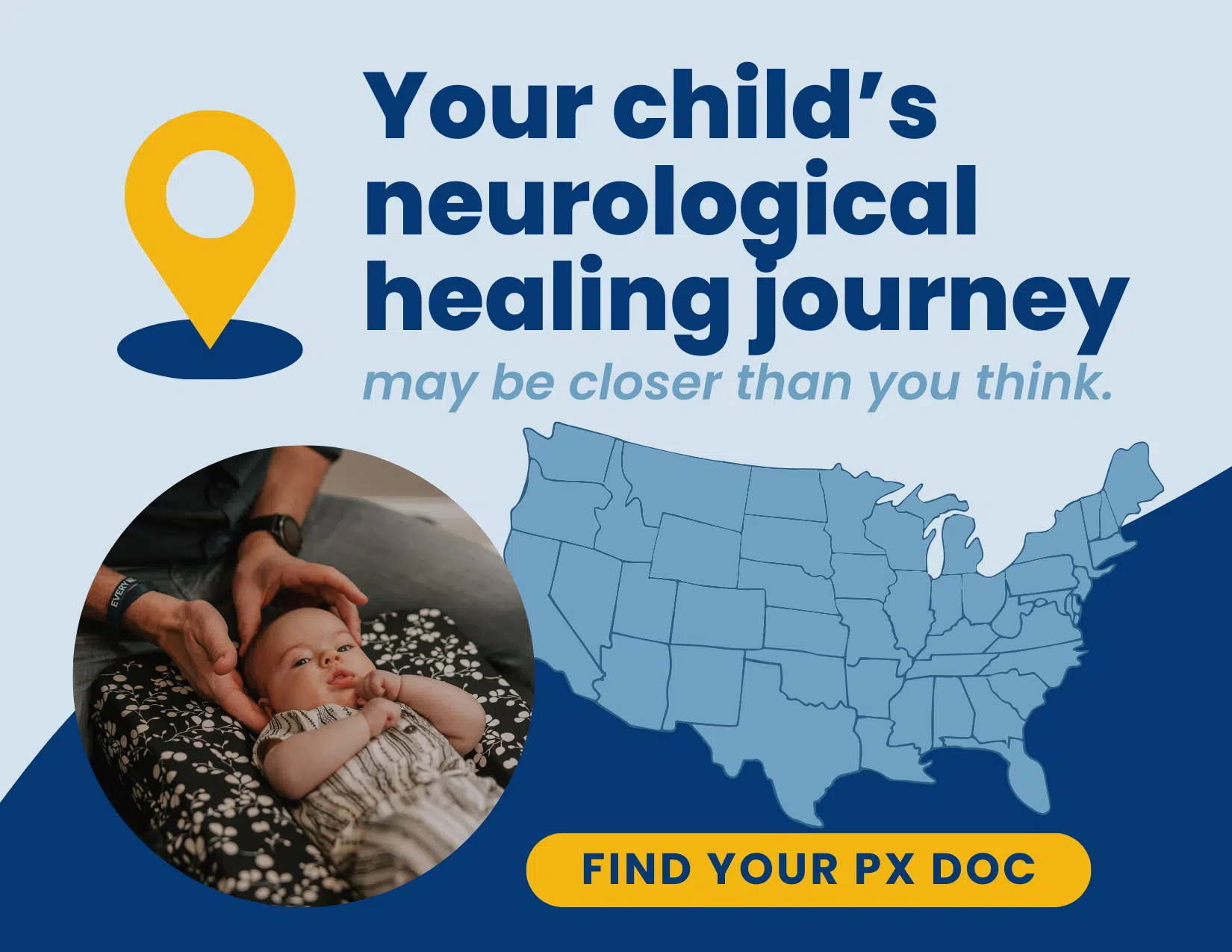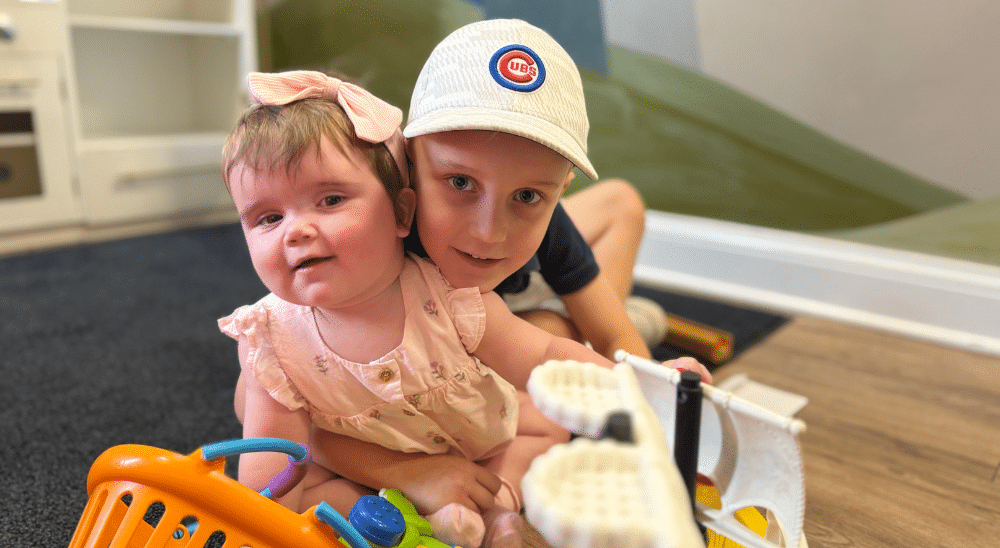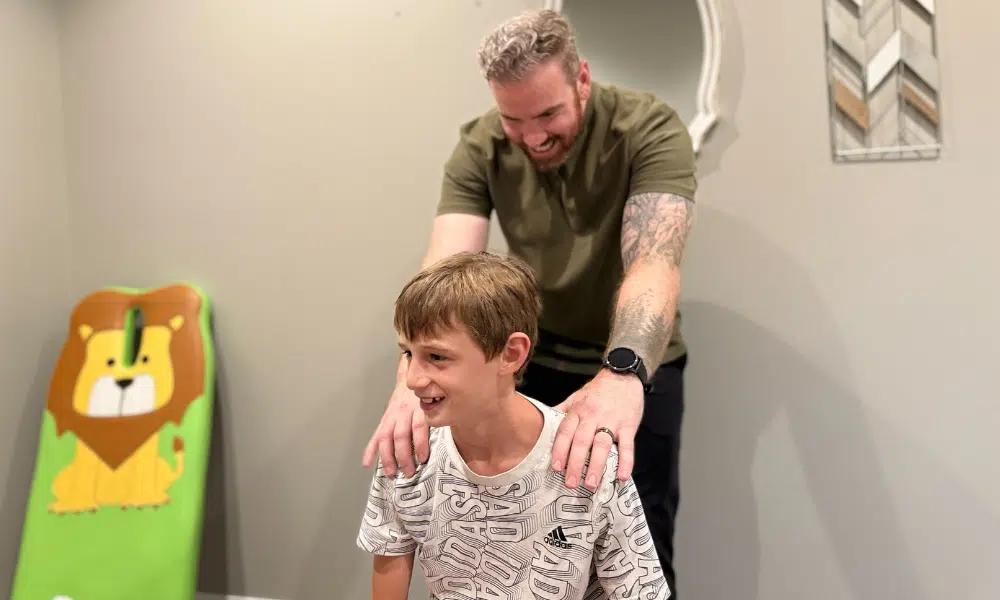As a parent, it’s heartbreaking to watch your baby struggle with seemingly simple tasks like lifting their head, rolling over, or even grasping a toy. You may notice that your little one feels “floppy” or limp, particularly in their arms and legs, when you hold them, almost like a rag doll. Then at the same time, other muscles begin to spasm and tighten up, often as a compensatory response to the low muscle tone in other regions of the body.
These signs often point to a condition called hypotonia, or low muscle tone, which affects many infants and children.
According to experts, hypotonia is often a feature that indicates several other neurological diseases or conditions, such as Down Syndrome, Prader-Willi Syndrome, Tay-Sachs Disease, or Muscular Dystrophy, with Down Syndrome being the most common. However, hypotonia and low muscle tone can exist to a lesser degree and not be associated with any one specific condition.
While finding answers and solutions may seem daunting, there is hope! PX Docs, a network of dedicated and experienced chiropractors, offers a unique approach to addressing hypotonia at its root cause through Neurologically-Focused Chiropractic Care. When paired with more traditional therapies like physical and occupational therapy, the results can be truly incredible and allow your child to achieve a much higher quality of life than with therapy alone.
In this article, we’ll explore the world of hypotonia, explaining its causes, signs, and the limitations of conventional medical approaches. More importantly, we’ll shed light on how PX Docs’ methods can help your child reach their full potential and thrive naturally and without the need for drugs or invasive care plans.
What is a Hypotonia Baby?
Hypotonia, also known as floppy baby syndrome, is a condition characterized by low muscle tone. Unlike muscle weakness, which refers to a lack of muscle strength, hypotonia is related to the amount of tension or resistance to movement in a muscle. Children with hypotonia often feel limp or “floppy” when held, as their muscles don’t provide the expected level of resistance.
Hypotonia can affect various body parts and is usually noticed in infancy or early childhood. Some common signs you have a low-muscle-tone baby include:
- Poor head control, with the head falling forward, backward, or to the side
- Difficulty lifting the head while lying on the stomach
- Limp or “rag doll” appearance when held
- Excessive flexibility in joints
- Delayed achievement of motor milestones, such as rolling over, sitting up, or crawling
- Difficulty feeding, including problems with sucking and swallowing
- Speech difficulties
- Fatigue and decreased muscle endurance
The effects of hypotonia can extend beyond physical development and impact a child’s overall quality of life. Children with hypotonia may struggle with tasks that require strength and coordination, such as dressing, writing, or participating in sports.
They may also experience emotional and social challenges, as their physical limitations can affect their ability to keep up with peers and engage in age-appropriate activities. Diving even deeper than that, we also know that sensorimotor and proprioceptive input into the brain help calm and regulate emotions, behavior, and cognitive development – meaning that children with hypotonia and low muscle tone are more prone to sensory processing problems, emotional dysregulation challenges, and so forth.
Causes of Floppy Baby Syndrome: The “Perfect Storm”
At PX Docs, we understand that the causes of hypotonia are often multifaceted and complex. We refer to this complexity as The “Perfect Storm“—a combination of factors that can disrupt a child’s neurological development and lead to conditions like hypotonia.
One of the primary factors in this “Perfect Storm” is neurological dysfunction, which can manifest as subluxation and dysautonomia.
Subluxation occurs when there is neurological interference within the neurospinal system that disrupts the brain’s ability to properly activate and coordinate muscle tone and movement, often contributing to neuromotor dysfunctions such as hypotonia and poor postural control.
Dysautonomia, on the other hand, refers to an imbalance in the Autonomic Nervous System, which controls involuntary functions like heart rate, digestion, and muscle tone.
Several experiences during pregnancy, birth, and early childhood can contribute to the development of subluxation and dysautonomia, including:
- Birth trauma and interventions, such as forceps delivery, vacuum extraction, or cesarean section
- Maternal stress during pregnancy, which can affect the developing baby’s nervous system
- Early exposure to antibiotics and other environmental toxins, both in utero and after birth
- Childhood falls, accidents, or sports injuries that impact the spine and Central Nervous System
While genetics can play a role in hypotonia, it’s just as important for parents to understand how birth trauma can also contribute to low muscle tone and delays in motor development. When parents are aware of this connection early on, they can seek out the right therapies and care options sooner—taking full advantage of the brain’s incredible ability to adapt and heal during the early years of life, when neuroplasticity is at its peak.
Conventional Medical Approach to Floppy Baby Syndrome
If you have a low-muscle-tone baby, the conventional medical approach typically begins with a diagnostic process to identify the underlying cause. This may involve a combination of physical examinations, neurological assessments, and various tests, such as:
- Magnetic Resonance Imaging (MRI) or Computed Tomography (CT) scans to identify brain abnormalities
- Blood tests to check for genetic situations or metabolic issues
- Electromyography (EMG) to evaluate nerve and muscle function
- Nerve conduction studies to assess the speed and strength of electrical signals in the nerves
Once a diagnosis is made, a conventional care plan for hypotonia often focuses on trait management and supportive care. Physical therapy and occupational therapy are commonly prescribed to help children develop strength, coordination, and gross and fine motor skills. Speech therapy may also be recommended for children with feeding or communication difficulties.
While these conventional approaches can help manage the signs of hypotonia, they often fail to address the underlying neurological dysfunction that contributes to the condition. Care plans like physical therapy and occupational therapy focus on the downstream effects of hypotonia, such as muscle weakness in the arms and legs, rather than targeting the root cause of the problem.
At PX Docs, we take a comprehensive, Neurologically-Focused approach to helping children with hypotonia achieve optimal outcomes. By identifying and addressing the underlying neurological imbalances contributing to the condition, we aim to support the body’s natural healing processes and promote long-term health.
The Nervous System’s Role in Hypotonia
At PX Docs, we understand that the nervous system plays a critical role in the development and regulation of muscle tone. In particular, the sensorimotor system is particularly sensitive to subluxation and disruptions in nervous system tone from dysautonomia, dysregulation, and those early Perfect Storm triggers.
When we look deeper into the causes of hypotonia using a neurological lens instead of focusing solely on the musculoskeletal system, we often find that subluxation triggers something called sympathetic nervous system dominance or overdrive.
This excessive sympathetic response leaves many muscles and regions of the body in a state of hypertonicity, or increased and excessive tone and spasticity. This is often the most overlooked and ignored aspect of hypotonia and low muscle tone – because often it’s the underlying hypertonia that triggers the compensatory hypotonic response.
Addressing subluxation and sympathetic dominance (hypertonicity) can be an absolute game changer for children struggling with hypotonia, and is something that the conventional pediatrician and therapy world does not normally check for, communicate, and address.
These neurological imbalances stemming from subluxation can lead to many signs and other challenges as well, including low muscle tone, poor coordination, toe walking, and developmental delays.
Finding Low Tone on INSiGHT EMG Scans
At PX Docs, our approach to hypotonia is grounded in the principles of Neurologically-Focused Chiropractic Care. This innovative approach combines advanced diagnostic tools, such as INSiGHT Scans, with chiropractic adjustments to identify and address the root causes of neurological dysfunction.
The EMG Scan below indicates a child whose case history and subluxation pattern perfectly illustrate what we’ve discussed in this article. First you’ll see increased tension and hypertonicity in the cervical (neck) and upper thoracic regions. This tension stems from subluxation and sympathetic dominance, and leaves the nervous system with “stuck stress” in those regions – which then contributes to the hypotonicity, weakness, and exhaustion seen in the neuro-core regions. These regions show up as yellow on the EMG scan, indicating hypotonia.
Additionally, the second image below is known as the Pattern Graph of the NeuroSpinal EMG Scans. When a child has both hypertonic and hypotonic imbalances like shown here, the overall Pattern Score (ideal range = 75-100) drops. A low EMG Pattern score is strongly correlated with low muscle tone, hypotonicity, a weak core, and delayed motor development.
Once areas of neurological imbalance have been identified, our skilled practitioners use what are called Neuro-Tonal Adjustments to correct subluxation, release stuck sympathetic dominance and tension, and stimulate or activate the exhausted, hypotonic regions of the neurospinal system. The combination of various adjusting techniques to address the different components of subluxation are one of the things that makes the PX Docs approach unique and most effective.
Overall the goals of Neurologically-Focused Chiropractic Care are not to treat or cure hypotonia or any other condition, but instead are entirely designed to and restore proper balance, tone, and regulation to the nervous system. This has a profound effect on the sensorimotor system, motor tone and coordination, and so much more.
Answering The Call for a More Comprehensive Solution
Hypotonia is a complex neurological condition that can significantly impact a child’s development, health, and overall quality of life. While conventional medical approaches to hypotonia often focus on primarily therapy and supportive care, the PX Docs approach offers a more comprehensive, Neurologically-Focused solution.
By identifying and addressing the underlying imbalances in the nervous system, PX Docs practitioners aim to promote optimal neurological function and support the body’s natural healing processes. Our network of skilled chiropractors is dedicated to helping children with hypotonia achieve their fullest potential through the use of advanced diagnostic tools, Neuro-Tonal chiropractic adjustments, and personalized care plans.
Many families who add PX Docs care to the mix notice marked improvements in motor function and report that their child now responds so much better to therapies, gets more out of them, and vastly improves overall quality of life. To learn more about how chiropractic care helps optimize results from PT and OT, download and listen to this Experience Miracles Podcast episode, or watch here on YouTube.
If you’re ready to take that next step and get your child started with Neurologically-Focused Chiropractic Care, we encourage you to visit our PX docs directory to find a practitioner near you.
By seeking the support of a PX Docs practitioner and taking an active role in your child’s health and well-being, you can help them overcome the challenges of hypotonia and experience lasting improvements in their quality of life!





